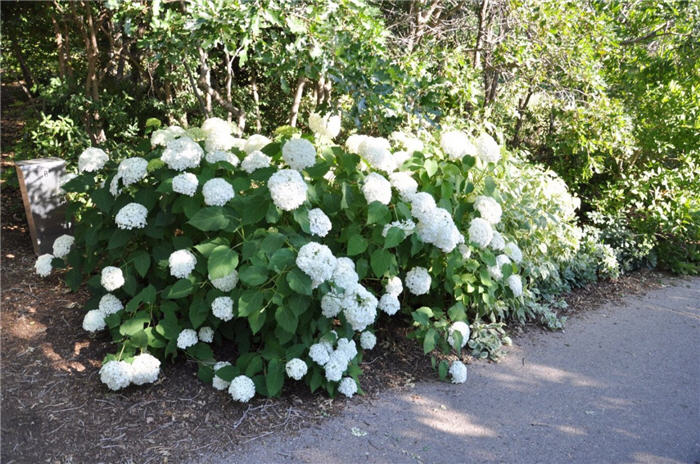| Botanical Name: Hydrangea arborescens 'Annabelle' | |
| Common Name: Annabelle Hydrangea |

-
Anatomy
-
Culture
-
Design
Plant Type
Shrub
Height Range
3-6'
Flower Color
White
Flower Season
Summer
Leaf Color
Green, Light Green
Bark Color
Brown
Fruit Color
n/a
Fruit Season
n/a
Sun
Half, Shade
Water
Medium, Extra in Summer
Growth Rate
Moderate
Soil Type
Clay, Loam
Soil Condition
Average, Rich, Well-drained
Soil pH
Neutral, Basic
Adverse Factors
n/a
Design Styles
English Cottage, Formal, Woodland
Accenting Features
Showy Flowers
Seasonal Interest
Summer, Fall
Location Uses
Entry, Perennial Border, Shrub Border, Foundation, Patio, Walls / Fences
Special Uses
Cut Flowers, Hedge, Small Spaces
Attracts Wildlife
n/a
Information by: Stephanie Duer
Photographer:
Photographer:
-
Description
-
Notes
Annabelle hydrangea is a no-fuss hydrangea, well suited to a part or filtered-sun border or foundation planting. It has a rounded, dense form, and grows to about 3 to 5 feet tall and wide. Leaves emerge a soft green and slightly pubescent, and grow into roundish, salad-plate-sized leaves. White flowers appear June thru August in huge, symmetrical, rounded heads which typically grow 8 to 12 inches across. Flowers persist well through the fall. Excellent cut fresh or dried. Wonderful in a shrub, mixed, or foundation border.
Grow in well-drained, loamy soil in part shade. Intolerant of drought, with foliage tending to decline considerably in dryish conditions, though it rebounds well. Unlike the pink or blue hydrange, Annabell grows well in our soils with little fuss or bother; just some mid-day shade and weekly-ish watering. Blooms on new wood, and may be pruned back close to the ground in late winter each year to revitalize and to encourage vigorous stem growth and best form. Plants may die to the ground in harsh winters. If not pruned back, any weakened and/or damaged stems should be removed in early spring. Pruning hard will keep it around 3 to 4 feet tall.